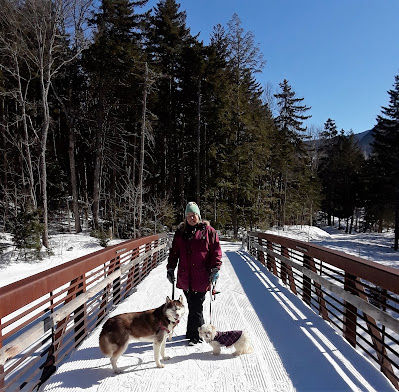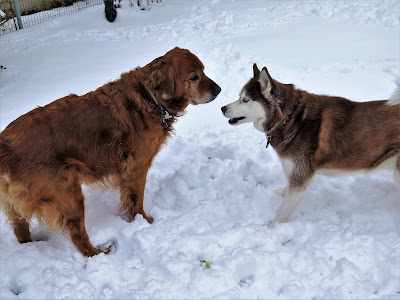If you read my blog regularly, you've probably figured out that dog friendly vacations and great dog friendly hotels are my world! I love sharing the adventures we go on with our dogs, Icy and Phoebe. Today I'd like to share some dog friendly fun in Waterville Valley, New Hampshire!
Waterville Valley, New Hampshire is a Great Dog Friendly Vacation Destination
Traveling With Dogs Takes Planning
When we first started traveling with the dogs and I had to plan dog friendly getaways, it helped me a lot to read about how other pet parents found great places to visit with dogs. It isn't always easy to find great pet friendly hotels and activities. We've been traveling with our dogs for several years, and now we're in the pet travel groove! We have shared many of our wonderful dog friendly adventures on this blog, and we'll continue to do so to help others plan their own great dog friendly vacations!
 |
| We stopped for a photo on a bridge along this beautiful dog friendly trail in Waterville Valley, NH |
Our latest travel adventure with Icy and Phoebe was a trip to the Waterville Valley, New Hampshire ski resort. No, the dogs didn't do any skiing, I did! New Hampshire is one of six states that make up New England, and it's one of my favorite New England states to visit. The other states that make up the New England region in the Northeastern United States are; Maine, Vermont, Rhode Island, Massachusetts and Connecticut. All these states are beautiful in every season and each one has something special to offer. However, we love New Hampshire the best, in both Winter and Summer. Waterville Valley is one of the best dog friendly vacations we've been on, so we go back as often as we can.








